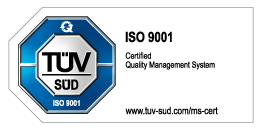Diesel Locomotive
Prototype: German State Railroad (DR) diesel locomotive road number 132 478-9, C-C wheel arrangement, built starting in 1974 in the USSR for the German State Railroad, nickname "Ludmilla". The locomotive looks as it did in October of 1989. Use: Heavy passenger and freight trains.
Most Important Facts
| Article No. | 16232 |
|---|---|
| Gauge / Design type | Minitrix / |
| Era | IV |
| Kind | Diesel Locomotives |
Check with your local dealer Find Dealer
-
Product description
Model: The locomotive has a built-in digital decoder for operation with DCC, Selectrix, and Selectrix 2. The motor has a flywheel. 4 axles powered. Traction tires. The triple headlights change over with the direction of travel, will work in analog operation, and can be controlled digitally. Length over the buffers 126 mm / 4-15/16".
Spare parts for our articles can be found here in our spare parts search.
One-time series on the anniversary "25 Years of the Fall of the Wall".
-
Publications
- New Items 2014 - Main Catalog 2014/2015 - Main Catalog 2015/2016
-
Prototype information
The DR Class 132 After decisions taken at the 6th German Communist Party Conference the change in motive power in the GDR was clearly to be accelerated. A 3,000 horsepower diesel locomotive was planned to speed up retirement of steam locomotives. This diesel built on the good results with the DR V 200. The installed of electric train heating was planned especially for passenger train service. A first six-axle prototype locomotive was built by the Soviet manufacturer, the "October Revolution" locomotive builder in Lugansk, Ukraine (from 1972 on: Woroschilowgrad), as the V 300 001 in 1969 and was presented to the public at the Leipzig Spring Fair in 1970. Since the electric train heating was still being developed, the DR initially was only able to put units of the classes 130 and 131 with this equipment into operation. At the end of 1972, the electric train heating was finally operational and reliable. This allowed delivery of the class 132 with its maximum speed of 120 km/h / 75 mph to begin. Between 1973 and 1982, 709 units were placed into service. Their frames and the two three-axle trucks were built up of welded sheet metal and stamped metal shapes. The locomotive bodies consisted of sheet metal panels and stamped metal shapes with side reinforcement ribs and they were welded to the frames. The locomotives were powered by a 16-cylinder four-stroke diesel motor with turbocharging and a continuous rating of 2,200 kilowatts (3,000 horsepower), which provided the necessary current to the six DC traction motors wired in series by means of a motive power generator. A supplemental heating generator provided current by means of the heating lines to power the lighting, air conditioning, and other users. Due to their large quantities, these locomotives soon hauled a large percentage of the trains on non-electrified routes. These units were jokingly called "Ludmilla" by West German railroad fans after the reunification of East and West Germany. A special honor was bestowed on the class 132 starting on October 1, 1989. Starting at Reichenbach/Vogtland it hauled trains with the GDR embassy refugees from Prague west to Hof in Bavaria. This marked a critical point in the "Turning Point" that occurred with the rapid collapse of the GDR a month later. The drastic slump in freight traffic after the collapse of East Germany soon resulted in a great oversupply of DR diesel locomotives. In the following years, many "Ludmillas" were taken out of service or were rebuilt. Currently there are about 70 units in use as the class 232 as part of the motive power roster of DB Schenker Rail Germany, Inc.




